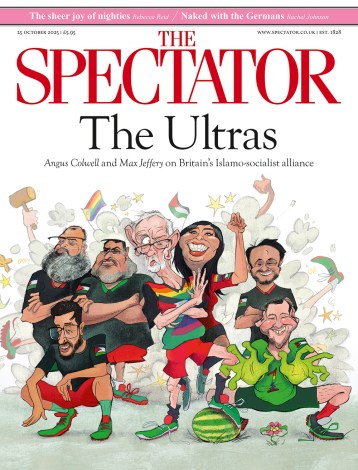
The Sisters Who Would Be Queen, by Leanda de Lisle
Only recently a portrait minature by Lavina Teerlinc was identified as being of Lady Jane Grey. Her diminutive size, coiffed red hair and crimson lips had suggested that it might be her — except that the eyes are blue, while Jane’s were known to be brown; but Teerlinc was accustomed to giving all her subjects blue eyes. It is all we have; no other portrait of Jane is known to exist.
The absence of a recognisable image reflects the problem facing any historian wishing to study her. The evidence is simply not there to form a credible description, let alone a biography, of England’s shortest reigning monarch. In its place, there have been many attempts over the centuries to promote the image of a Protestant stalwart, or the innocent lamb led by Mary to slaughter.
In The Sisters Who Would Be Queen, Leanda de Lisle avoids this trap by turning her attention not merely to Jane, but also to Katherine and Mary, her two younger sisters. Through their mother, Lady Frances Brandon, the niece of Henry VIII, all three were potential heirs to the Tudor throne, placed by Henry’s highly controversial will next in line to his own children. Their story is therefore also the story of the Tudor succession.
Katherine’s and Mary’s fates, though less familiar than Jane’s, were similarly tragic, and de Lisle’s account makes for a thrilling read that could sit comfortably beside any novel by Philippa Gregory. Her pen- portraits of the many characters deftly reveal a fascinating network of marriages and alliances amongst the nobility, set against the turbulent religious changes of the time.
The early chapters, on Jane, essentially cover the bloody history of the reigns of the precocious boy king, Edward VI and his sister Mary. De Lisle’s insights into Jane’s education are especially valuable. As well as studying Greek, Latin, French and Italian, Jane even turned her hand to Arabic, as she vied with Elizabeth, on Edward’s death, to become the learned figurehead of the Protestant cause. She succeeded; and went to her death doing so.
Katherine led a no less chequered life. The most beautiful of the Grey sisters, she fell in love with Edward Seymour, Earl of Hertford, the son of Edward VI’s former Protector, secretly married him and fell pregnant with his child. It was a rash thing to do: Katherine, who de Lisle admits ‘lacked her mother’s common sense and her elder sister’s acute intellect’, was considered, along with Mary, Queen of Scots, to be one of the heirs to Elizabeth’s throne. To marry without the monarch’s approval was courting trouble. Revealing her brutal side, in her fury Elizabeth imprisoned both Katherine and Hertford in the Tower in 1561 and ordered their marriage be annulled. When Katherine gave birth to a boy, a plausible male heir should Elizabeth die childless, the debate over the Tudor succession split wide open. Pamphlets poured from the presses championing Katherine and her son; plays performed at court hinted at her legitimate claim and parliament was rumoured to be considering ratifying her position.
But any hope of rehabilitation ended when Katherine conceived a second child with Hertford in the Tower. Elizabeth never allowed her to see her husband again, and she died five years later, probably from anorexia.
The youngest sister, Mary, possessed neither intellect nor beauty. An insignificant dwarf, ‘crook backed and very ugly’, she too managed to cause scandal when she married, without Elizabeth’s permission, the Sergeant Porter — or royal gatekeeper — Thomas Keyes, the tallest man at court. William Cecil wrote to a friend in disgust: ‘Here is an unhappy chance and monstrous, the offence is very great.’ She too was removed from her husband, and released from prison only after his death. She died childless at the age of 33.
De Lisle wears her learning lightly, though the details are carefully crafted and researched, down to the portraits hanging on the walls of aristocratic houses. There are occasional errors (Amy Robsart died at the house of Anthony Forster, not Sir Richard Verney) but there are revelations too. A letter from Katherine to Hertford has been unearthed, written during her confinement in the Tower. First spotted by a Victorian parson, it was considered at the time unsuitable to print in full. The more intimate — and poignant — passages are now reproduced for the first time:
I long to be merry with you, as I know you do with me, as we were when our sweet little boys were gotten in the Tower . . . I wish you to be as happy as I was sad when you came to my door for the third time, and it was locked. Do you think that I can forget what passed between us? No I cannot. I remember it more often than you know.
Jane, who had urged her younger sisters to ‘despise the flesh’ would have been aghast. Yet for both Katherine and Mary, the temptation of love proved simply too great. That was their tragedy.
Chris Skidmore’s Death and the Virgin: Elizabeth, Dudley and the Mysterious Fate of Amy Robsart will be published later this year.





Comments